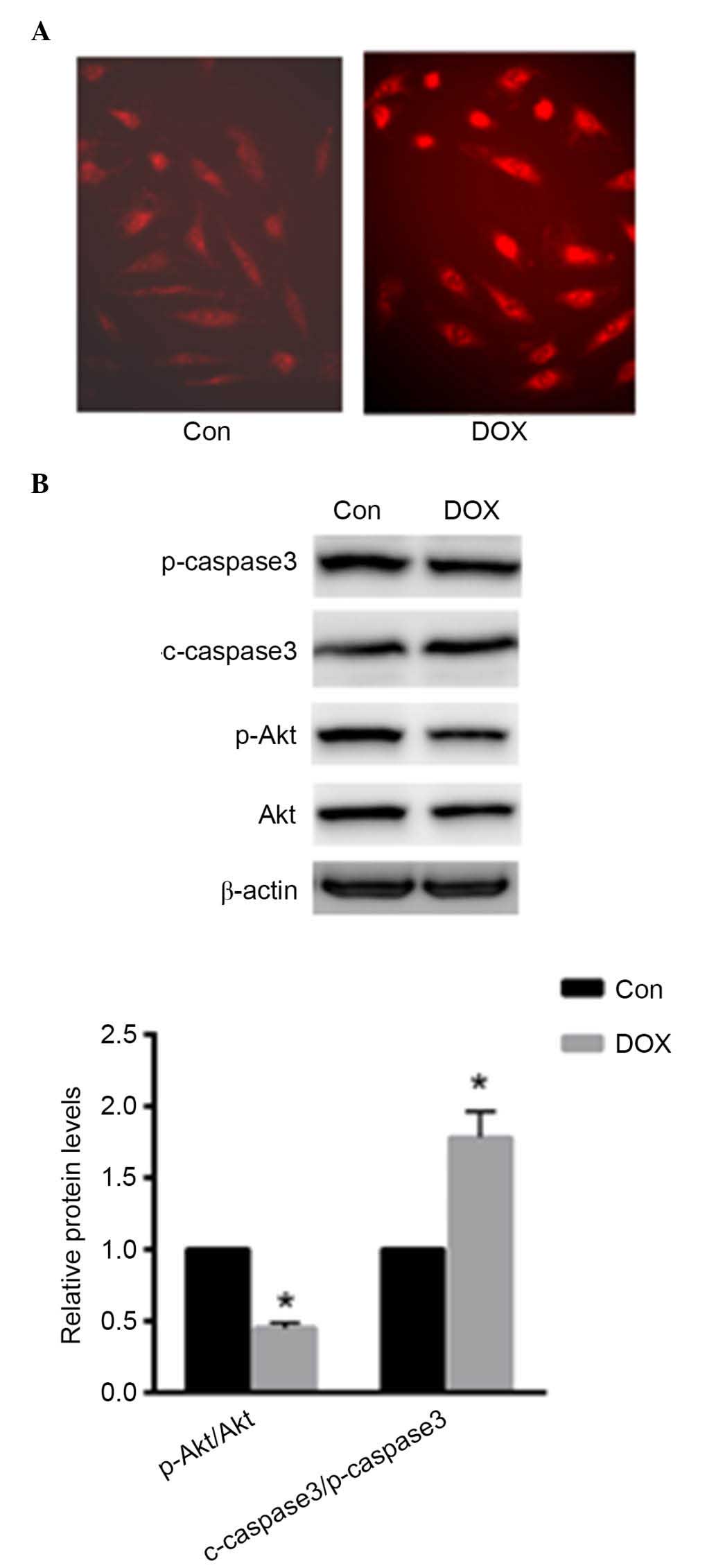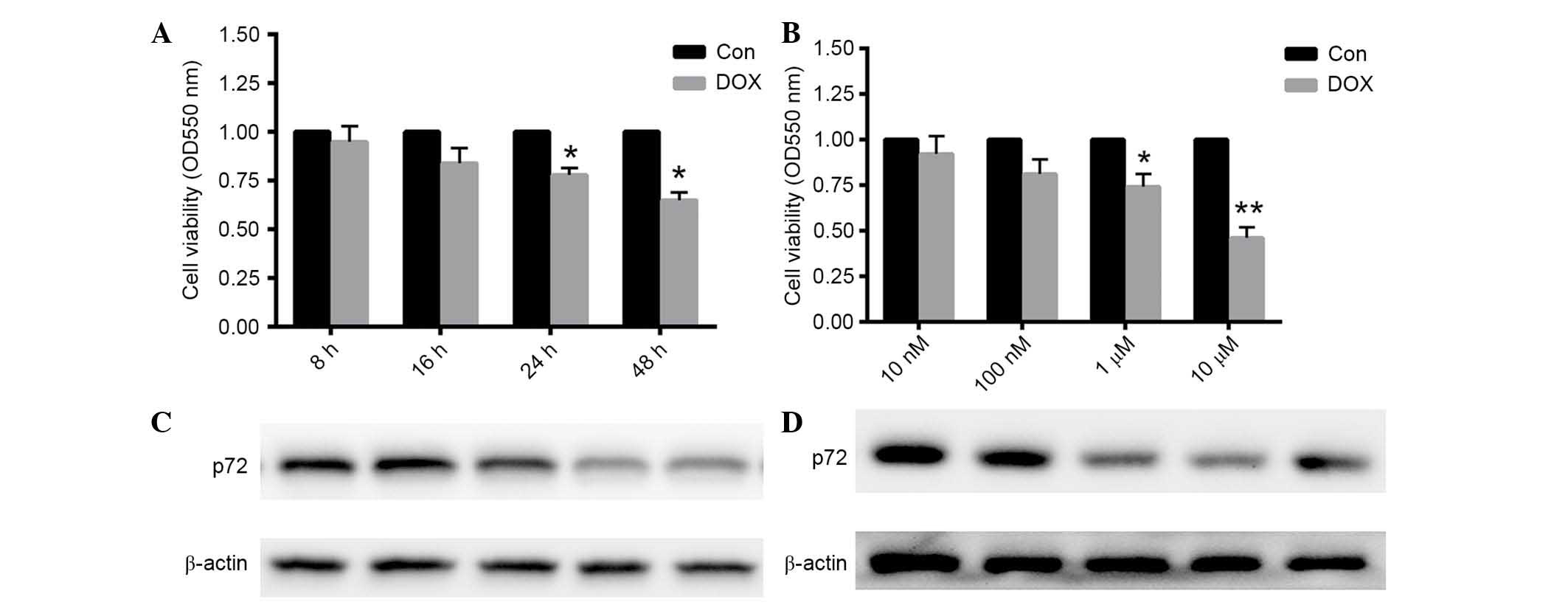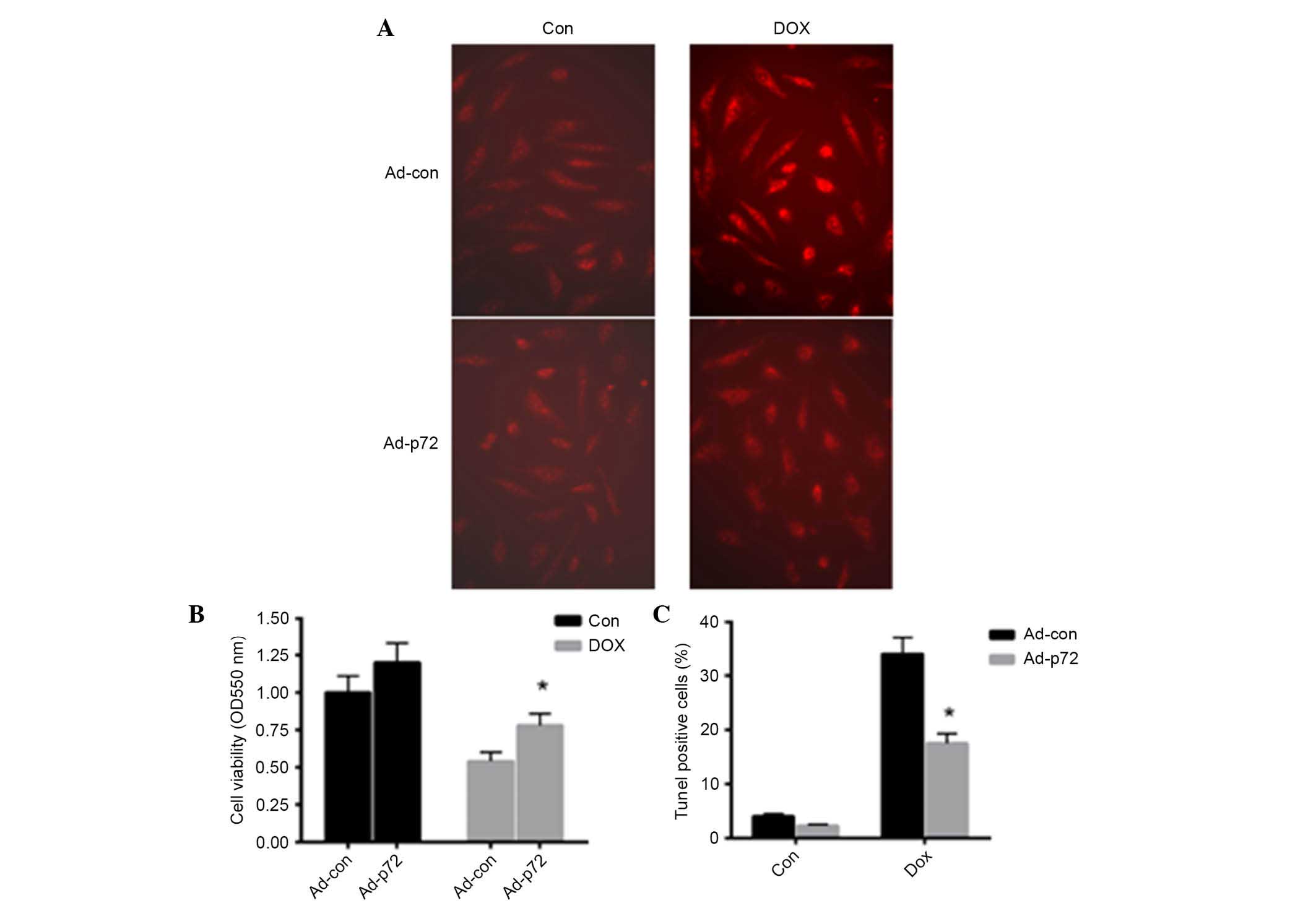|
1
|
Smith LA, Cornelius VR, Plummer CJ, Levitt
G, Verrill M, Canney P and Jones A: Cardiotoxicity of anthracycline
agents for the treatment of cancer: Systematic review and
meta-analysis of randomised controlled trials. BMC Cancer.
10:3372010. View Article : Google Scholar : PubMed/NCBI
|
|
2
|
Lefrak EA, Pitha J, Rosenheim S and
Gottlieb JA: A clinicopathologic analysis of adriamycin
cardiotoxicity. Cancer. 32:302–314. 1973. View Article : Google Scholar : PubMed/NCBI
|
|
3
|
Wojtacki J, Lewicka-Nowak E and
Leśniewski-Kmak K: Anthracycline-induced cardiotoxicity: Clinical
course, risk factors, pathogenesis, detection and prevention-review
of the literature. Med Sci Monit. 6:411–420. 2000.
|
|
4
|
Von Hoff DD, Layard MW, Basa P, Davis HL
Jr, Von Hoff AL, Rozencweig M and Muggia FM: Risk factors for
doxorubicin-induced congestive heart failure. Ann Intern Med.
91:710–717. 1979. View Article : Google Scholar : PubMed/NCBI
|
|
5
|
Zhang S, Liu X, Bawa-Khalfe T, Lu LS, Lyu
YL, Liu LF and Yeh ET: Identification of the molecular basis of
doxorubicin-induced cardiotoxicity. Nat Med. 18:1639–1642. 2012.
View Article : Google Scholar : PubMed/NCBI
|
|
6
|
Zhou S, Starkov A, Froberg MK, Leino RL
and Wallace KB: Cumulative and irreversible cardiac mitochondrial
dysfunction induced by doxorubicin. Cancer Res. 61:771–777.
2001.PubMed/NCBI
|
|
7
|
Bleichert F and Baserga SJ: The long
unwinding road of RNA helicases. Mol Cell. 27:339–352. 2007.
View Article : Google Scholar : PubMed/NCBI
|
|
8
|
Jankowsky E, Gross CH, Shuman S and Pyle
AM: Active disruption of an RNA-protein interaction by a DExH/D RNA
helicase. Science. 291:121–125. 2001. View Article : Google Scholar : PubMed/NCBI
|
|
9
|
Uhlmann-Schiffler H, Rössler OG and Stahl
H: The mRNA of DEAD box protein p72 is alternatively translated
into an 82-kDa RNA helicase. J Biol Chem. 277:1066–1075. 2002.
View Article : Google Scholar
|
|
10
|
Yager JD and Davidson NE: Estrogen
carcinogenesis in breast cancer. N Engl J Med. 354:270–282. 2006.
View Article : Google Scholar : PubMed/NCBI
|
|
11
|
Causevic M, Hislop RG, Kernohan NM, Carey
FA, Kay RA, Steele RJ and Fuller-Pace FV: Overexpression and
poly-ubiquitylation of the DEAD-box RNA helicase p68 in colorectal
tumours. Oncogene. 20:7734–7743. 2001. View Article : Google Scholar : PubMed/NCBI
|
|
12
|
Yang L, Lin C, Zhao S, Wang H and Liu ZR:
Phosphorylation of p68 RNA helicase plays a role in
platelet-derived growth factor-induced cell proliferation by
up-regulating cyclin D1 and c-Myc expression. J Biol Chem.
282:16811–16819. 2007. View Article : Google Scholar : PubMed/NCBI
|
|
13
|
Wu CH, Liu JY, Wu JP, Hsieh YH, Liu CJ,
Hwang JM, Lee SD, Chen LM, Chang MH, Kuo WW, et al:
17beta-estradiol reduces cardiac hypertrophy mediated through the
up-regulation of PI3K/Akt and the suppression of calcineurin/NF-AT3
signaling pathways in rats. Life Sci. 78:347–356. 2005. View Article : Google Scholar : PubMed/NCBI
|
|
14
|
Ivanov D, Shabalov N, Petrenko Y,
Shabalova N and Treskina NA: The specific characteristics of DIC
syndrome vary with different clinical settings in the newborn. J
Matern Fetal Neonatal Med. 27:1088–1092. 2014. View Article : Google Scholar
|
|
15
|
Xu J, Qian J, Xie X, Lin L, Zou Y, Fu M,
Huang Z, Zhang G, Su Y and Ge J: High density lipoprotein protects
mesenchymal stem cells from oxidative stress-induced apoptosis via
activation of the PI3K/Akt pathway and suppression of reactive
oxygen species. Int J Mol Sci. 13:17104–17120. 2012. View Article : Google Scholar
|
|
16
|
Muzi-Filho H, Bezerra CG, Souza AM,
Boldrini LC, Takiya CM, Oliveira FL, Nesi RT, Valença SS,
Einicker-Lamas M, Vieyra A, et al: Undernutrition affects cell
survival, oxidative stress, Ca2+ handling and signaling pathways in
vas deferens, crippling reproductive capacity. PLoS One.
8:e696822013. View Article : Google Scholar : PubMed/NCBI
|
|
17
|
Zhong L, Zhou XL, Liu YS, Wang YM, Ma F,
Guo BL, Yan ZQ and Zhang QY: Estrogen receptor α mediates the
effects of notoginsenoside R1 on endotoxin-induced inflammatory and
apoptotic responses in H9c2 cardiomyocytes. Mol Med Rep.
12:119–126. 2015.PubMed/NCBI
|
|
18
|
Wang T, McDonald C, Petrenko NB, Leblanc
M, Wang T, Giguere V, Evans RM, Patel VV and Pei L:
Estrogen-related receptor α (ERRα) and ERRγ are essential
coordinators of cardiac metabolism and function. Mol Cell Biol.
35:1281–1298. 2015. View Article : Google Scholar : PubMed/NCBI
|
|
19
|
Mahmoodzadeh S, Leber J, Zhang X, Jaisser
F, Messaoudi S, Morano I, Furth PA, Dworatzek E and Regitz-Zagrosek
V: Cardiomyocyte-specific estrogen receptor alpha increases
angiogenesis, lymphangiogenesis and reduces fibrosis in the female
mouse heart post-myocardial infarction. J Cell Sci Ther. 5:1532014.
View Article : Google Scholar : PubMed/NCBI
|
|
20
|
Wu KL, Chen CH and Shih CD:
Nontranscriptional activation of PI3K/Akt signaling mediates
hypotensive effect following activation ofestrogen receptor β in
the rostral ventrolateral medulla of rats. J Biomed Sci. 19:762012.
View Article : Google Scholar
|
|
21
|
Huang Y and Liu ZR: The ATPase, RNA
unwinding, and RNA binding activities of recombinant p68 RNA
helicase. J Biol Chem. 277:12810–12815. 2002. View Article : Google Scholar : PubMed/NCBI
|
|
22
|
Watanabe M, Yanagisawa J, Kitagawa H,
Takeyama K, Ogawa S, Arao Y, Suzawa M, Kobayashi Y, Yano T,
Yoshikawa H, et al: A subfamily of RNA-binding DEAD-box proteins
acts as an estrogen receptor alpha coactivator through the
N-terminal activation domain (AF-1) with an RNA coactivator, SRA.
EMBO J. 20:1341–1352. 2001. View Article : Google Scholar : PubMed/NCBI
|
|
23
|
Metivier R, Penot G, Hübner MR, Reid G,
Brand H, Kos M and Gannon F: Estrogen receptor-alpha directs
ordered, cyclical and combinatorial recruitment of cofactors on a
natural target promoter. Cell. 115:751–763. 2003. View Article : Google Scholar
|













